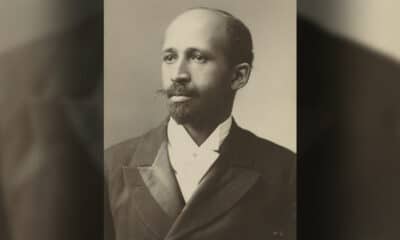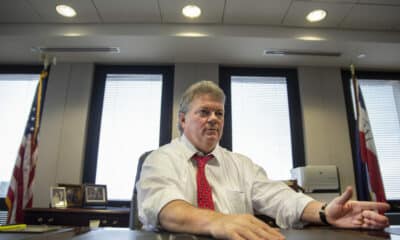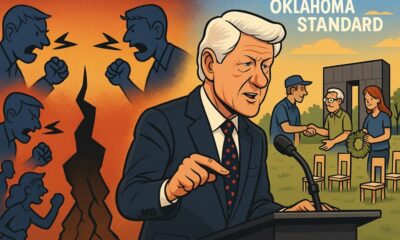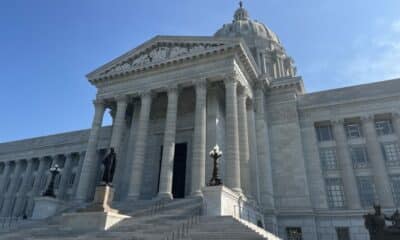
AP Photo/Richard Vogel
Cassandra Chapman, The University of Queensland
In late 2019 and early 2020, a series of devastating wildfires, known as the “black summer” bushfire disaster, left Australia reeling: More than 20% of the country’s forests burned.
As a scholar of the psychology of charitable giving, I have long been interested in the unique emotional response that disasters evoke – often generating an urgent and visceral wish to help.
I wanted to understand how and why people respond to a crisis of this magnitude. For the project, I teamed up with three Australian environmental psychology and collective action experts: Matthew Hornsey, Kelly Fielding and Robyn Gulliver.
We found that international media coverage of disasters can help increase donations. Our findings, which were published in the peer-reviewed academic journal Disasters in 2022, are relevant to the situation in Los Angeles, where severe fires destroyed thousands of homes and businesses in January 2025, devastating many communities.
That recovery could take years.
5 key factors affect generosity
All told, Australian donors gave more than US$397 million, or $640 million in Australian dollars, to support the recovery from the black summer bushfire disaster. The international community also rallied: U.S. and U.K. donors contributed an additional US$2.6 million. These donations were used to fund evacuation centers, support groups for victims, and cash grants for repairs and rebuilding, among other things.
When we surveyed 949 Australians about what influenced their donations and analyzed news articles about the disaster, we found that coverage of disasters significantly increased generosity and influenced which charities drew donations. This may be because news articles communicated directly the need for charitable support.
Using this survey data, we identified key factors that influenced how much money, if any, people donated in response to the bushfire disaster appeals. These five were linked with the amounts Australians donated:
• Scale: The sheer scale of the fires.
• Personal impact: Having been personally affected, knowing people who have been affected, or being worried that they will be affected in the future.
• Climate change beliefs: Believing that climate change is impacting the environment.
• News footage: The dramatic footage of the fires they have seen.
• Stories: The stories of those who have been affected.
Three of these factors – scale, news footage and stories – relate to information people were exposed to in media coverage of the disaster. Further, when we asked people how they chose which charities to support, they said that media coverage was more influential than either their friends and family or direct communication from those same charities.
These findings collectively show how media coverage can powerfully influence both how much people give to disaster relief and which nonprofits they choose to support.

Brook Mitchell/Getty Images
Setting the agenda
In the next phase of our research, we tried to learn how media coverage affects the public’s generosity.
We downloaded every news article we could find about the disaster over the three-month period that fires raged and analyzed the text of 30,239 news articles using Linguistic Inquiry and Word Count software.
We looked at which kinds of language and concepts were being used in media coverage, and how frequently they were used compared with their use in everyday written language.
In addition to concepts we expected to see, like emergency, heroes and human loss, we found that the concepts of support and money frequently showed up in coverage. Words like “donations,” “help” and “support” occurred in 74% of news articles. Words having to do with money were even more common: They appeared almost twice as often as they do in ordinary written language.
Our findings suggest that news coverage may have helped to set the agenda for the huge charitable response to Australia’s wildfire disaster because the media told people what they should be thinking about in terms of that disaster. In Australia’s case, it was how they could help.
A consideration for the media
We also believe that it’s likely that news coverage of disasters like this one can serve an agenda-setting function by teaching the public how to think about the crisis.
To the extent that news coverage highlights concepts like support, possibly communicating that donating is a normal response to a crisis, it’s reasonable to expect people to donate more money.
Given that news coverage can influence how much someone donates, as well as which charities they choose to support, nonprofits responding to the Los Angeles fires may wish to encourage media outlets to mention their work in news coverage.
It is likely that being featured in news coverage – especially when calls to action or opportunities to donate are incorporated in an article – would result in more funds being raised for the charity’s response to the disaster.![]()
Cassandra Chapman, Associate Professor, The University of Queensland
This article is republished from The Conversation under a Creative Commons license. Read the original article.



























































